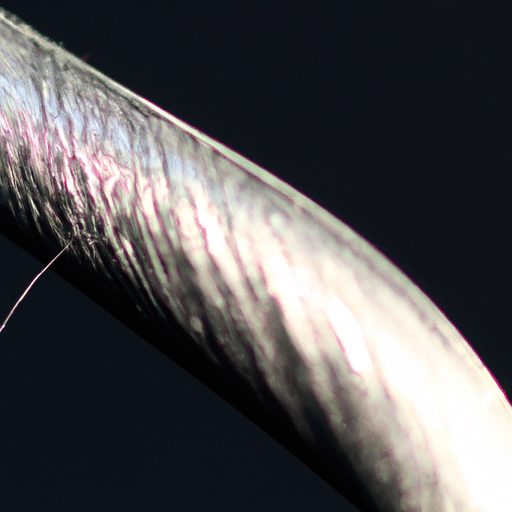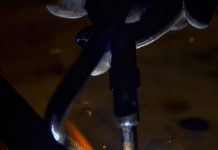In the world of welding, precision and efficiency are key to achieving high-quality results. That’s where a welding electrode sharpener comes into play. This nifty tool serves a crucial purpose in ensuring that the welding electrodes are kept in optimal condition. By sharpening the tip of the electrode, the sharpener enables a cleaner and more precise arc, leading to improved welding control and reduced spatter. With its ability to extend the life of electrodes and enhance welding performance, a welding electrode sharpener is an indispensable asset for any welding enthusiast or professional.
Review contents
Overview of Welding Electrode Sharpener
A welding electrode sharpener is a tool that is specifically designed to sharpen the tips of welding electrodes, which are used in various welding applications. This sharpener is an essential tool for welders, as it ensures that the electrodes are in optimal condition and can deliver precise and efficient welds. It is a compact and portable device that can easily be used in the workshop or on the go.
Importance of Maintaining Sharp Electrodes
Maintaining sharp electrodes is crucial for achieving high-quality welds. When the electrode tip is dull or worn out, it can negatively impact the welding process. A dull electrode tip can cause uneven arc starts, inconsistent weld penetration, and poor bead appearance. It can lead to increased welding defects and rework, which can be time-consuming and costly.
By regularly sharpening the electrodes, welders can ensure that the tip is always sharp and ready for use. This allows for a stable arc initiation, better arc control, improved weld quality, and increased productivity. Additionally, sharp electrodes reduce the risk of arc instability and prevent the occurrence of weld defects such as porosity, undercutting, and spatter.
Benefits of Using a Welding Electrode Sharpener
Using a welding electrode sharpener offers numerous benefits to welders, both in terms of efficiency and cost-effectiveness. Here are some of the key benefits:
-
Improved Weld Quality: A sharp electrode tip allows for better control over the arc, resulting in consistent weld penetration, reduced defects, and a more aesthetically pleasing weld bead.
-
Enhanced Productivity: Sharpening electrodes ensures that they are ready for immediate use, eliminating time wasted on manually reshaping the tip. This saves valuable time and increases overall productivity in welding operations.
-
Extended Electrode Lifespan: A sharp electrode experiences less wear and tear during welding, leading to a longer lifespan. By sharpening electrodes regularly, welders can extend the life of their electrodes and reduce the frequency of replacements, thus saving money in the long run.
-
Reduced Costs: Sharpening electrodes rather than discarding them after they become dull can significantly reduce welding costs. A welding electrode sharpener is a cost-effective investment that pays for itself over time.
Different Types of Welding Electrode Sharpeners
There are various types of welding electrode sharpeners available in the market today. Each type offers different features and benefits to suit the specific needs of welders. Some of the commonly used types include:
-
Bench-Top Sharpeners: These sharpeners are stationary devices that are mounted on a workbench. They are equipped with grinding wheels or stones that rapidly sharpen the electrode tips by removing any debris, oxide layers, or blunt edges.
-
Handheld Sharpeners: Handheld sharpeners are portable and compact devices that can easily be carried to different job sites. They typically consist of a handle with a built-in grinding stone or diamond-coated wheel. Welders can simply hold the electrode against the rotating wheel to sharpen the tip.
-
Multi-function Sharpeners: Some sharpeners offer multiple functions, such as sharpening both tungsten electrodes and welding rods. These versatile tools are convenient for welders who work with different types of electrodes.
Factors to Consider When Choosing a Welding Electrode Sharpener
When selecting a welding electrode sharpener, there are several important factors to consider. These factors will help ensure that you choose the right sharpener for your specific needs:
-
Compatibility: Make sure that the sharpener is compatible with the type and size of electrodes you commonly use in your welding tasks.
-
Ease of Use: Look for a sharpener that is user-friendly and easy to operate. Consider the design, controls, and any additional features that facilitate convenient sharpening.
-
Durability: Opt for a sharpener that is built to last. Look for sturdy construction, quality materials, and reliable brand reputation.
-
Safety Features: Check for safety features such as eye protection shields, proper guards, and secure clamping mechanisms to prevent accidents during sharpening.
-
Portability: If you frequently work in different locations, portable sharpeners may be a better choice for you. Consider the size, weight, and portability features of the sharpener.
Proper Techniques for Sharpening Welding Electrodes
To effectively sharpen welding electrodes, it is important to follow proper techniques. Below are the steps to ensure a successful sharpening process:
-
Preparation: Before sharpening, ensure that the electrode is clean and free from any contaminants. Remove any existing electrode coating or slag by gently grinding the tip on a bench grinder.
-
Select the Right Angle: Determine the angle at which you want to sharpen the electrode. This will depend on the specific welding application and electrode type. A common angle is around 20 to 30 degrees.
-
Secure the Electrode: Use a vise or an electrode holder to securely clamp the electrode during the sharpening process. This will prevent the electrode from moving or slipping and ensure consistent results.
-
Sharpening Motion: Hold the electrode against the sharpening surface, such as a grinding wheel, at the desired angle. Move the electrode in a circular motion, applying light pressure. Avoid excessive pressure to prevent overheating and damaging the electrode.
-
Check Progress: Periodically check the electrode tip’s sharpness by visually inspecting it. The tip should be sharp, symmetrical, and free from any bluntness or irregularities.
-
Finishing Touches: After sharpening, gently deburr the electrode tip by lightly touching it against the grinding wheel or using a deburring tool. This ensures a smooth and clean finish.
How to Use a Welding Electrode Sharpener
Using a welding electrode sharpener is a simple and straightforward process. Follow these steps to effectively use the sharpener:
-
Prepare the Sharpener: Ensure that the sharpener is properly set up and securely mounted or held, depending on its type.
-
Insert the Electrode: Insert the electrode into the sharpener, ensuring that it is properly aligned and firmly in place.
-
Turn on the Sharpener: Switch the sharpener on, activating the grinding wheel or stone.
-
Sharpen the Electrode: Gently hold the electrode against the rotating wheel or stone, ensuring consistent contact and movement. Move the electrode back and forth or in a circular motion, depending on the sharpener’s instructions.
-
Check and Repeat: Periodically check the electrode’s sharpness during the sharpening process. Repeat the sharpening motion until the desired sharpness is achieved.
-
Clean and Store: After sharpening, clean any residue from the electrode and the sharpener. Store the sharpener in a safe and dry place for future use.
Common Mistakes to Avoid When Sharpening Electrodes
While sharpening welding electrodes, it is important to avoid common mistakes that can compromise weld quality or damage the electrode. Some key mistakes to avoid include:
-
Overheating the Electrode: Applying excessive pressure or spending too much time sharpening the tip can lead to overheating, which can damage the electrode and affect its performance. Avoid prolonged sharpening and ensure to cool down the electrode in water intermittently.
-
Inconsistent Grinding: If the electrode is not held securely or moved inconsistently during sharpening, it can lead to an uneven tip and cause issues during welding. Always ensure a firm grip and maintain a consistent sharpening motion.
-
Neglecting Deburring: Failing to deburr the electrode after sharpening can leave sharp edges or burrs, which can affect the weld quality. Be sure to remove any remaining burrs to achieve a smooth and clean electrode tip.
-
Ignoring Regular Maintenance: Like any tool, a welding electrode sharpener requires regular maintenance to perform optimally. Neglecting routine cleaning, calibration, or replacement of worn-out parts can result in subpar sharpening results.
Tips for Extending the Lifespan of Electrodes with a Sharpener
To maximize the lifespan of electrodes and ensure their continued performance, follow these helpful tips:
-
Sharpen Regularly: Regularly sharpening the electrodes prevents excessive wear and tear, increasing their lifespan.
-
Maintain Proper Storage: Store electrodes in a dry environment to prevent moisture absorption, which can lead to issues during welding.
-
Handle with Care: Avoid dropping or mishandling electrodes, as this can cause damage and compromise their performance.
-
Clean After Use: After each welding session, clean the electrodes thoroughly to remove any slag or contaminants that may affect their performance.
-
Follow Manufacturer’s Guidelines: Always adhere to the manufacturer’s guidelines and recommendations for electrode usage, storage, and maintenance.
Final Thoughts and Recommendations
A welding electrode sharpener is a valuable tool for any welder. It plays a vital role in ensuring that electrodes are consistently sharp and ready for use, which directly impacts the quality and efficiency of welding operations. By maintaining sharp electrodes, welders can achieve better welds, increase productivity, and reduce welding costs. When choosing a welding electrode sharpener, consider factors such as compatibility, ease of use, durability, and safety features. By following proper sharpening techniques, using the sharpener correctly, and avoiding common mistakes, welders can maximize the lifespan of their electrodes and achieve optimal welding results. Remember to take the necessary steps to extend the lifespan of electrodes, such as regular sharpening, proper storage, careful handling, and routine cleaning. With a welding electrode sharpener and proper maintenance, welders can elevate their welding skills and achieve outstanding welds.



























